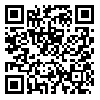BibTeX | RIS | EndNote | Medlars | ProCite | Reference Manager | RefWorks
Send citation to:
URL: http://journal.zums.ac.ir/article-1-1082-en.html
2- Faculty of Medicine, Zanjan University of Medical Sciences, Zanjan, Iran.
Background and Objective: Epileptic seizures are generally considered as complex and abnormal hyperexcitable phenomena in the brain. Probable changing of excitability in visual cortex by dark rearing (DR) might lead to clonic seizure. In this study the possible effect of dark rearing on Pentylenetetrazol (PTZ) - induced generalized clonic seizure was studied. Materials and Methods: To assess the generalized clonic seizure (GCS) threshold and incidence and latency of GCS, 0.5% Pentylenetetrazol was administrated intravenously and 80 mg/kg subcutaneously to the control and dark reared animals. Results: Our results showed that generalized clonic seizure threshold in DR group was not changed but occurring of GCS in DR animals was significantly lower and its latency was higher than the control animals. The tonic – clonic seizure was not different between the two groups. Conclusion: In spite of increasing seizure susceptibility in visual cortex by light deprivation, a kind of protection was observed in dark reared animals. Further studies seem to be necessary to elucidate the role of other factors such as melatonin.
Received: 2010/04/13 | Accepted: 2014/06/24 | Published: 2014/06/24
| Rights and permissions | |
 |
This work is licensed under a Creative Commons Attribution-NonCommercial 4.0 International License. |




